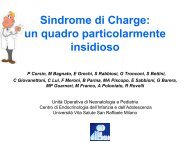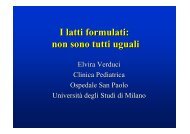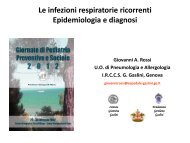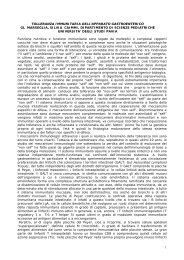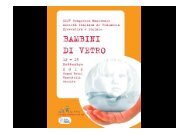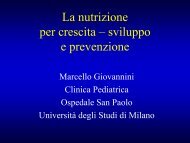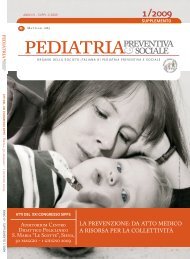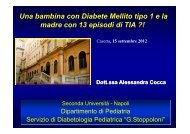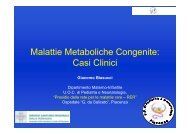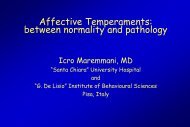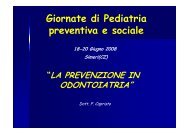T.Mazzei, A.Novelli pdf - Sipps
T.Mazzei, A.Novelli pdf - Sipps
T.Mazzei, A.Novelli pdf - Sipps
Create successful ePaper yourself
Turn your PDF publications into a flip-book with our unique Google optimized e-Paper software.
Generic versus non-generic formulation of extended-release clarithromycin in<br />
patients with community-acquired respiratory tract infections: a prospective,<br />
randomized, comparative, investigator-blind, multicentre study<br />
Snyman JR, Schoeman HS, Grobusch MP, Henning M, Rabie W, Hira M, Parshotam K, Mithal Y, Singh S,<br />
Ramdas Z<br />
Department of Pharmacology, School of Medicine, University of Pretoria, Pretoria, South Africa<br />
BACKGROUND AND OBJECTIVE: There is a general concern about the use of multisource<br />
(generic) antibacterials in the clinical setting with registration based solely on<br />
bioequivalence data. In order to address this concern, two modified-release formulations<br />
of clarithromycin were compared in patients with acute community-acquired respiratory<br />
tract infections.<br />
METHODS: Patients presenting with tonsillopharyngitis, sinusitis or pneumonia were<br />
randomized to receive either of the test drugs provided they clinically qualified for<br />
empirical clarithromycin treatment. The study endpoint were clinical and bacteriological<br />
cure rates, tolerability and safety. The study was designed to test for non-inferiority with<br />
regard to cure rates.<br />
RESULTS: The main outcome of this study was that both agents had similar clinical (noninferior)<br />
and bacteriological cure rates and demonstrated no difference in tolerability in<br />
patients. The study also demonstrated the clinical efficacy of clarithromycin when used<br />
as empirical treatment in patients with respiratory tract infections in community practice<br />
(i.e. 95% clinical cure rates).<br />
CONCLUSION: The clarithromycin extended-release multisource product does not differ<br />
significantly from the originator and the clinical cure rate of the generic formulation is<br />
non-inferior to that of the originator. The two formulations are tolerated similarly.<br />
Clin Drug Investig, 2009 29(4): 265-74



